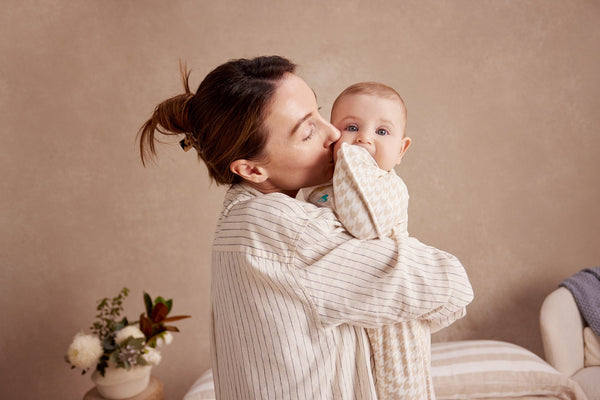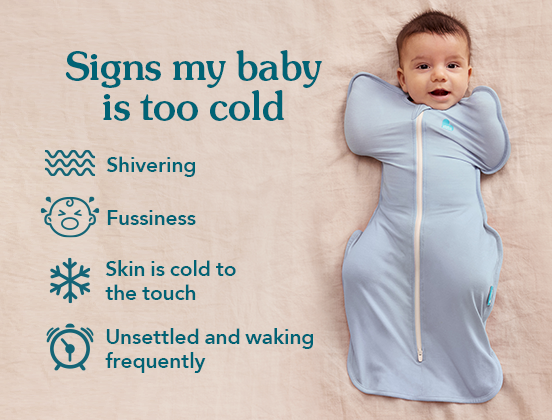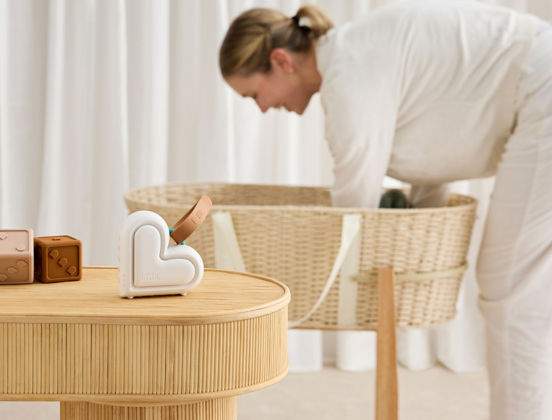Finding the Best TOG Sleep Sack for Winter
Although it may sound like an unfamiliar language, TOG ratings are fairly straightforward to understand and shouldn’t cause confusion. A TOG (Thermal Overall Grade) rating is a unit of measurement that refers to the amount of insulation in sleepwear. This rating can be found on a range of baby sleepwear and is of great help when navigating changing temperatures and keeping your baby comfortable during sleep. The lower the rating, the lighter the fabric. Finding the right baby sleep sack for winter can be a challenge for parents—both new and experienced—but understanding TOG ratings makes it easier to choose the right level of warmth for your little one.
Find the Best Temperature for Baby Sleep
Keeping an eye on your baby’s room temperature will help you manage their comfort level during winter. Ideally your baby’s room temperature should sit somewhere between 18-22°C. If you’re able to safely maintain a room temperature within this range, it may mean that you don’t need to add too many additional layers to your baby’s clothing or sleepwear. However, if during winter the room dips below 18°C, you will need to pay more attention to the thermal grade of your baby’s sleep apparel and adjust the number of layers accordingly.
What TOG is best for winter?
If the room temperature is below 18°C, the recommended TOG rating for your baby’s sleeping bag or swaddle would be between 1.0 - 3.5 depending on how cold the room is. For example:
- Room temperatures between 18-24°C - 1.0 TOG
- Room temperatures between 16-20°C - 2.5 TOG
- Room temperatures below 16°C - 3. 5 TOG
Our clothing guide gives you a visual representation of how TOG ratings relate to a range of temperatures and provides suggested layering combinations for the cold weather.
How should I dress my baby for sleep in winter?
Layering lightweight, breathable clothing in winter is key, as this allows you to add and remove clothing in line with the changing temperatures. Rather than dressing your baby in a lot of extra clothing, if you want to offer your baby additional warmth for sleep in winter, it’s better to choose a swaddle or sleeping bag with a temperature rating suitable to the room temperature.
Rompers for sleep are ideal for babies as they provide a lightweight, comfortable layer and fit nicely under a sleep sack or swaddle. Alternatively, a long sleeve top or a bodysuit with leggings is another appropriate combination for baby’s sleep in winter. For extra cold nights you could also consider adding a bodysuit under your baby’s romper or pair of lightweight, breathable socks.
Layer up
Layering your baby’s clothing in winter is the ideal way to provide you with options when it comes to responding to the temperature as it changes. Using lightweight layers to dress your baby means you can add or remove layers to keep them as comfortable as possible.
As tempting as it may be when you’re feeling cold yourself, avoid overdoing the layers. Keep in mind that your baby will also likely be sleeping with a temperature-appropriate sleeping bag or swaddle, which provides a reliable, consistent thermal performance.
If you’re wondering how many layers a baby should wear in winter, start with 1-2 and if you feel your baby is too cold, add an extra layer. Whether that be a bodysuit underneath a romper or a long sleeve bodysuit with some leggings and a pair of breathable socks.
If your baby looks flushed or is sweating they are likely wearing too many layers and you should remove some clothing or lower the thermal grade of their sleeping bag or swaddle until they are at a comfortable temperature.




















